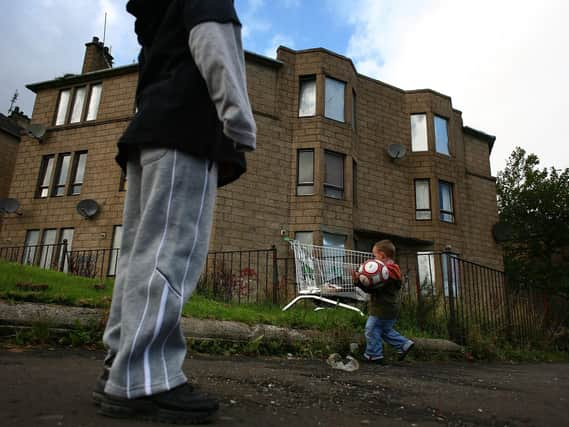Third of Yorkshire's children living in poverty, "deeply worrying" new figures reveal


An increase of some 5.8 per cent in poverty levels has occurred over the past five years, with Leeds and Bradford seeing the highest levels in the region when housing costs are taken into account. Some 33.4 per cent of children were living below the poverty line in 2019/2020 compared to 28 per cent in 2014/2015.
Nationally, of the UK nations, Wales has the highest rate of children living in poverty (31 per cent), followed by England (30 per cent), with Scotland and Northern Ireland equal on 24 per cent.
Advertisement
Hide AdAdvertisement
Hide AdThe figures, released by Action for Children as part of the End Child Poverty Coalition do not capture the state of poverty during the pandemic, leading to concerns that even more young people are struggling further.
Child poverty in Bradford rose by 7.7 per cent, with 37.7 per cent of children living below the breadline. The situation is similar in Leeds with 35.3 per cent of children in poverty, a five-year increase of 6.7 per cent.
Harrogate has the lowest levels of child poverty in the region with 17.5 per cent, along with Hambleton at 20.1 per cent and Richmond at 21.3 per cent.
Every local authority in Yorkshire and the Humber has seen an increase over the past five years, according to the data which also shows the parliamentary constituencies in the region with greatest numbers of children living in poverty are Bradford West and Bradford East with 47 per cent each, closely followed by Leeds East at 44 per cent.
Advertisement
Hide AdAdvertisement
Hide AdImran Hussain, director of policy and campaigns at Action for Children, said: “These deeply worrying figures reveal the true extent of the hardship facing families across Yorkshire and the Humber – even before the pandemic hit. With child poverty rates rising, children in the region are among those most exposed to the devastating economic consequences of the pandemic.
“Our frontline workers tell us that poverty levels are at the worst they’ve ever seen, as they deliver vital support to families in the region desperately trying to keep their kids clothed and fed.”
The End Child Poverty Coalition – which includes charities, trade unions and faith groups –has called on the Government to increase child benefits and said its £20 cut to Universal Credit in October should be revoked.
The coalition said 60 per cent of median income for a family of one adult and one child, after housing costs, would be £223 a week in 2019/20, £280 for one adult and two children, or £400 for a family of four.
Advertisement
Hide AdAdvertisement
Hide AdLeeds City Councillor, Labour's Fiona Venner, executive member for children and adult social care, said: “Instead of supporting families through this crisis the Government wants to cut Universal Credit, pushing more people into poverty. It’s a perfect storm coming for those who have been reliant on Covid support as 50,000 on furlough in Leeds will also see support end in September.”
Coun Venner said Leeds City Council was doing “everything that we can to mitigate the impacts of poverty” including its emergency food scheme.
A Government spokesman said: “Latest figures show that the number of children in absolute poverty has fallen by 300,000 since 2010. We are committed to supporting families most in need, spending billions more on welfare and planning a long-term route out of poverty by protecting jobs through furlough and helping people find new work through our Plan for Jobs.”